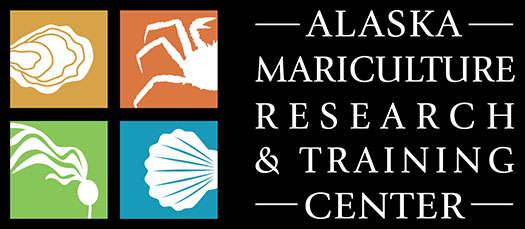Research and Workforce Development Priorities
In 2016, the Alaska Mariculture Task Force (MTF) was established and mandated by Governor Walker to assess and provide a report of formal recommendations for the development of a viable and sustainable mariculture industry.
In 2021, the Final Report to Governor Dunleavy was provided by the MTF, which was then succeeded by the Alaska Mariculture Alliance (AMA). Initial research and workforce development priorities, along with the vision, goal, and plan for developing a viable and sustainable mariculture industry in Alaska, can be found in the Final Report
In 2023, the Pacific Coast Shellfish Growers Association (PCSGA) Research Committee published the updated 2023 Research Priorities.
Research Projects
Lead Organizer
- Select Filter Criteria
- University of Alaska Fairbanks
- Alaska Fisheries Development Foundation
- Barnacle Foods
- Alaska Conservation Foundation
- Woods Hole Oceanographic Institution
- Prince William Sound Science Center
- National Oceanic and Atmospheric Administration
- Saltwater Inc.
- Kodiak Economic Development Corporation
- Alutiiq Pride Marine Institute
- Native Village of Chenega
- ARPA-e/ CAT 1 team
- Chugach Regional Resources Commission
- Pacific Shellfish Institute
- Alaska Sea Grant
- Valdez Native Tribe
- University of Alaska Southeast
- Pacific Hybreed
- Alaska Department of Fish and Game
- Sea Quester
- Alaska Ocean Farms
- Native Village of Eyak
- The Native Conservancy
- Greenwave
Research Topic
Species
- Select Filter Criteria
- Sugar Kelp (Saccharina latissima)
- Bull Kelp (Nereocystis luetkeana)
- Ribbon Kelp (Alaria marginata)
- Pacific Oyster (Magallana gigas)
- Seaweed
- Shellfish
- Basket Cockle (Clinocardium nuttallii)
- Littleneck Clams (Leukoma staminea)
- Pacific Razor Clam (Siliqua patula)
- Red King Crab (Paralithodes camtschaticus)
- Black Chiton (Katharina tunicata)
- Pinto Abalone (Haliotis kamtschatkana)
- California Sea Cucumber (Apostichopus californicus)
- Butter Clams (Saxidomus gigantea)
- 5-Ribbed Kelp (Costaria costata)
- Black Seaweed (Pyropia abbottiae)
- Red Ribbon (Devaleraea mollis)
- Stiff Red Ribbon (Palmaria hecatensis)
- Sea Otter (Enhydra lutris)
- Giant kelp (Macrocystis pyrifera)
- Dragon kelp (Eularia fistulosa)
- Pacific herring (Clupea pallasii)
- Red ribbon (Devaleracea mollis)
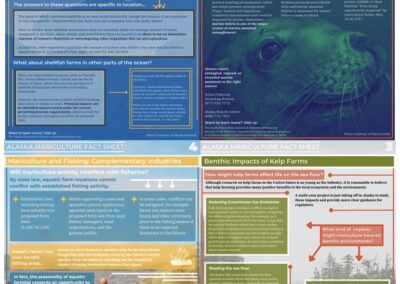
The goals of this project are to facilitate and support the work of the Alaska Mariculture Alliance (AMA), Alaska Native Development Workgroup, and to improve communication within environmental, fishing, and other relevant mariculture partners in Alaska.
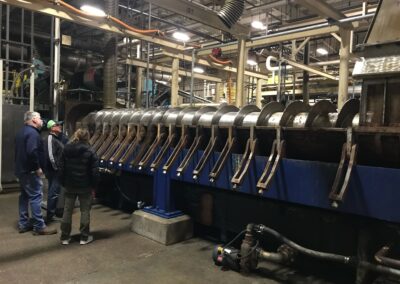
This project is based around product development research, evaluating the potential for existing fishmeal processing equipment to act as a primary stabilization of kelp, prior to secondary value-added processing.
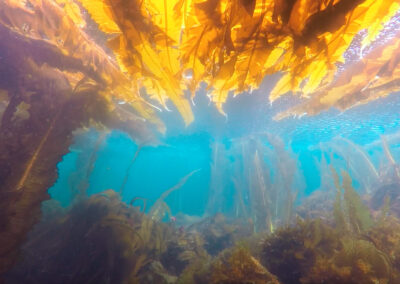
The impact of climate-related and local stressors on foundation species is of particular interest.
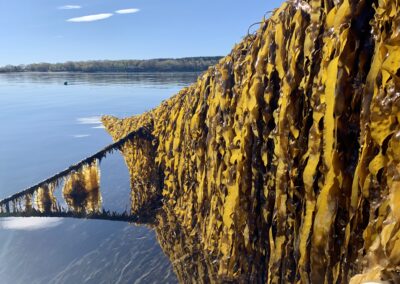
This project is to determine the feasibility of using offshore kelp mariculture to provide biomass for fuels.
